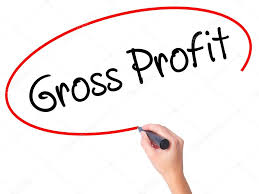18 Dec Holding Cost Killing Your Gross?
Vehicle reconditioning is an essential process for every used car department. It not only gets vehicles ready for consumers’ eyeballs, but when it gets them front line ready fast, it can mean more gross on every sale.
Every used car manager knows this intuitively. I’m not sure, though, they understand the real profitability impact behind this concept of time-to-line. Time-to-line (T2L) is a span of time from vehicle acquisition — from trade or auction — to its front line-ready appearance online or on the lot.
I’ve talked to multiple dealers, used car managers and service managers about ways to streamline their recon processes. I help them identify bottlenecks and other delays that slow the flow of this work through inspection, UCM approval, parts, mechanical, body, detail and photos. I always ask, “What is an acceptable number of days for your time-to-market? Is it 15 days? 10 days? Five days?” If even three days could be shaved off their time-to-market, how might that impact gross? Can five days or more be eliminated? Where the right recon processes and the right recon intelligence is being used, it can be accomplished — and with consistency.
To best understand the potential here, the concept of holding costs must be considered. Each vehicle you acquire and recon has a holding cost. This is a daily dollar figure that represents a portion of your overhead applied to each vehicle you take in trade, buy at auction or otherwise acquire, recondition and detail. NCM Associates notes from its 20 Group studies that this daily figure is on average $37 per vehicle. Holding costs add up daily for every vehicle in recon and not on the front line — both online and on the lot — where consumers can see it and buy it.
A used car manager who wants to achieve top gross for sold vehicles, of course, monitors recon to ensure vehicles are not over-reconditioned and to manage overall recon costs. It can be a shortsighted decision, however, to hold a vehicle up a day or more for OEM parts when, in reality, OEM parts are not required and aftermarket parts are readily available. It might be a better decision to spend a little more for the “readily available” part to move the recon along to get it frontline ready sooner.
Let’s look at an example:
Consider a sold gross of $3,200. This unit was in recon for 15 days, and once it got to the lot (or online) it sold in 25 days. Holding costs to frontline ready are $37/day x 15 days, or $555. Days- to-sold was another 25, adding another $925 in holding costs. Thus, total holding cost against sold gross was $1,480. Subtract this $1,480 holding-cost erosion from the $3,200 “sold” gross, and the true margin on this deal is $1,720.
While a $1,720 gross is OK, reducing recon time by an additional five days would have meant another $185 in true gross.
You’ve probably tried to track recon’s phases using whiteboards or spreadsheets, only to find them falling into disuse rather quickly. There are just too many individual steps and pieces to reconditioning to follow and manage without technology to simplify the business. The right recon technology can equip management with what the real-time insights are for each step and each of the following steps. It also shows where there is workflow waste and inefficiency.

What follows are some practical steps dealers can use to help shorten their time-to-market:
- Speed approvals — Inability to get a work order approved by the USM can delay start of work from a few minutes to a few hours. Improving communication between recon and the UCM can reduce delays.
- Set pre-approvals — Allowing some level of authority to approve needed work without UCM approval can keep work flowing uninterrupted. Consider assigning repair dollar “buckets” for vehicles of varying mileage — low, medium, high — based on the mileage averages of the vehicle you recon.
- Structure phase times — Set a specific time frame for accomplishing specific types of work. Times can vary based on the condition of the vehicle. Monitor times and hold staff accountable for adhering to them.
- Compensate for vehicle-completion time, not per vehicle — Focus compensation on a production-based measurement. Specified completion times per vehicle will stimulate parties involved to work smarter and harder to move units through recon in fewer days. Consider spiffs for meeting goals, but when considering spiffs, keep in mind the larger picture: reducing holding costs and turns that improve gross.
- Equip for quality and manage by clock — Make no allowance for marginal quality work, but beware of tendencies to over re-condition. The additional recon cost is rarely recouped and often contributes little to the vehicle’s salability. Pay attention to visuals, such as dings and dents, scuffed wheels, glass and other elements buyers notice before any mechanical issues ever get noticed.
How might your grosses improve if you could get cars frontline ready in fewer days? Never calculate the gross made on a used car sale without backing out its holding costs to determine its true gross. In any market, time-to-market is critical. A used car manager who ignores the holding cost impact on profitability does so at a cost to everyone working in the dealership.
[/vc_column_text][/vc_column][/vc_row][vc_row css_animation=”” row_type=”row” use_row_as_full_screen_section=”no” type=”full_width” angled_section=”no” text_align=”left” background_image_as_pattern=”without_pattern”][vc_column][vc_raw_html]JTNDbGluayUyMHJlbCUzRCUyMnN0eWxlc2hlZXQlMjIlMjBocmVmJTNEJTIyaHR0cHMlM0ElMkYlMkZlbWJlZC5jYWxjdWxvaWQuY29tJTJGc3R5bGVzJTJGbWFpbi5jc3MlMjIlMjAlMkYlM0UlMEElM0NzY3JpcHQlMjBzcmMlM0QlMjJodHRwcyUzQSUyRiUyRmVtYmVkLmNhbGN1bG9pZC5jb20lMkZzY3JpcHRzJTJGY29tYmluZWQubWluLmpzJTIyJTNFJTNDJTJGc2NyaXB0JTNFJTBBJTNDZGl2JTIwbmctYXBwJTNEJTIyY2FsY3Vsb2lkJTIyJTIwbmctY29udHJvbGxlciUzRCUyMkNhbGN1bG9pZE1haW5DdHJsJTIyJTIwbmctaW5pdCUzRCUyMmluaXQlMjglN0JjYWxjSWQlM0E0NDQ1JTJDYXBpS2V5JTNBJTI3NTYwNDBkZTlkMzM1OCUyNyU3RCUyOSUyMiUyMG5nLWluY2x1ZGUlM0QlMjJsb2FkJTI4JTI5JTIyJTNFJTNDJTJGZGl2JTNF[/vc_raw_html][/vc_column][/vc_row]


Sorry, the comment form is closed at this time.